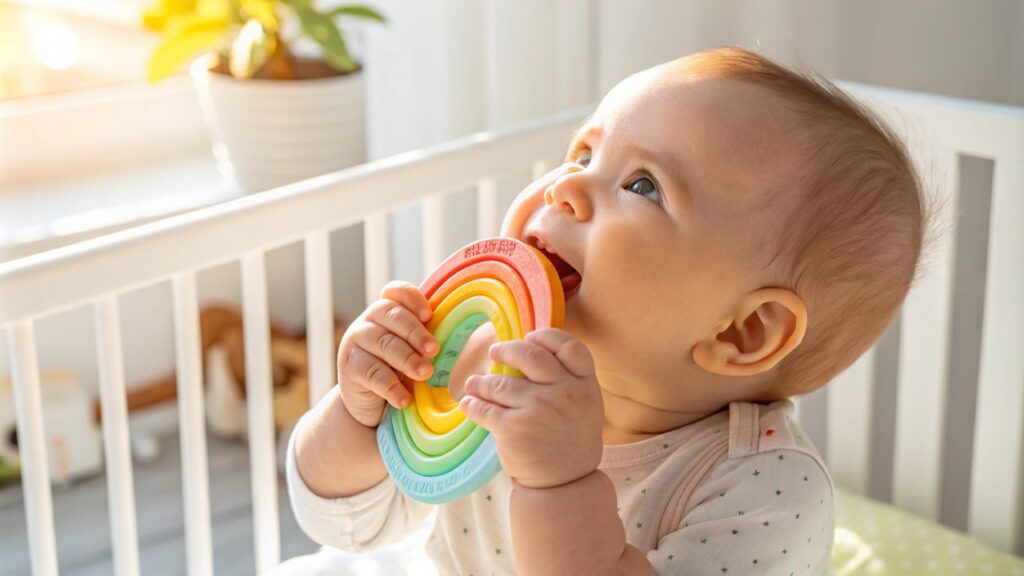
Teething is a challenging phase for both parents and babies. You may wonder if silicone teethers are truly safe for your baby’s sensitive gums.
Yes, silicone baby teethers made from food-grade materials are considered safe, non-toxic, and effective for soothing teething pain.
When my baby started teething, I was overwhelmed by the options available. After researching and testing, I found silicone teethers to be a reliable and safe choice. Here's everything I learned to help you decide.
Is silicone safe for a baby teether?
Silicone teethers are widely recommended by pediatricians and parents. But what makes them safe?
Silicone teethers are made from food-grade silicone, which is non-toxic, BPA-free, and soft enough to soothe your baby’s gums.
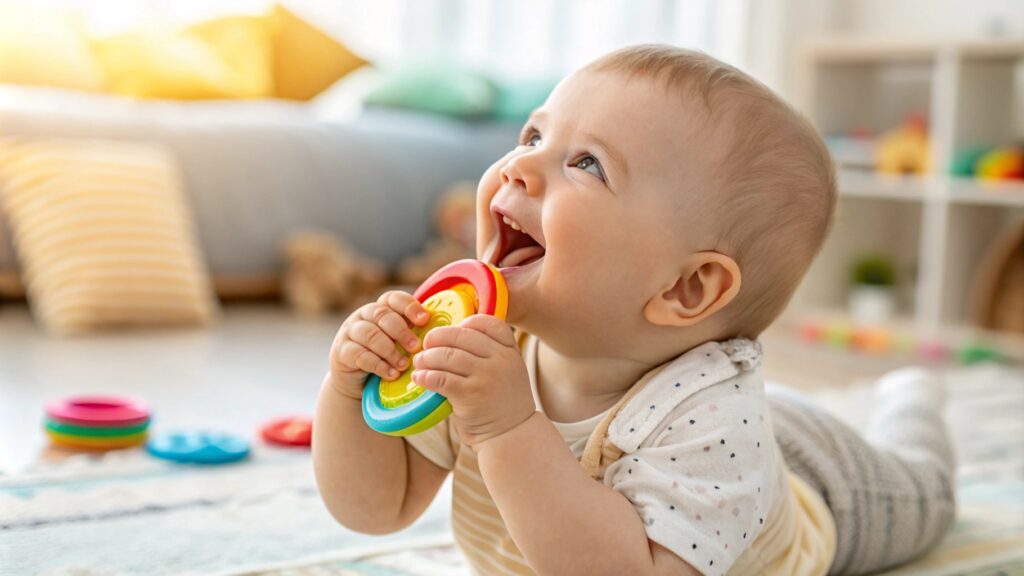
Dive Deeper into Silicone Safety
Silicone is a synthetic material that is highly durable and resistant to heat. Food-grade silicone undergoes rigorous testing to ensure it is free from harmful substances like BPA, phthalates, and lead. Certifications such as FDA, LFGB, and EN71 validate its safety.
Benefits of Silicone for Baby Teethers
- Non-toxic: Safe for babies to chew without harmful chemical exposure.
- Durable: Withstands repeated use and washing.
- Easy to Clean: Resists bacteria and mold growth.
- Gentle on Gums: Soft and flexible, providing comfort without harming sensitive gums.
How I Ensure Safety
At Siliconwave, we prioritize safety. All silicone used for baby teethers is tested to meet FDA and LFGB standards. We also ensure the designs have no sharp edges and are easy to grip for tiny hands.
Is it safe for babies to chew on silicone toys?
Chewing is a natural part of teething. Babies explore the world with their mouths, which makes safe materials essential.
Yes, it is safe for babies to chew on silicone toys as long as they are made from certified food-grade silicone.
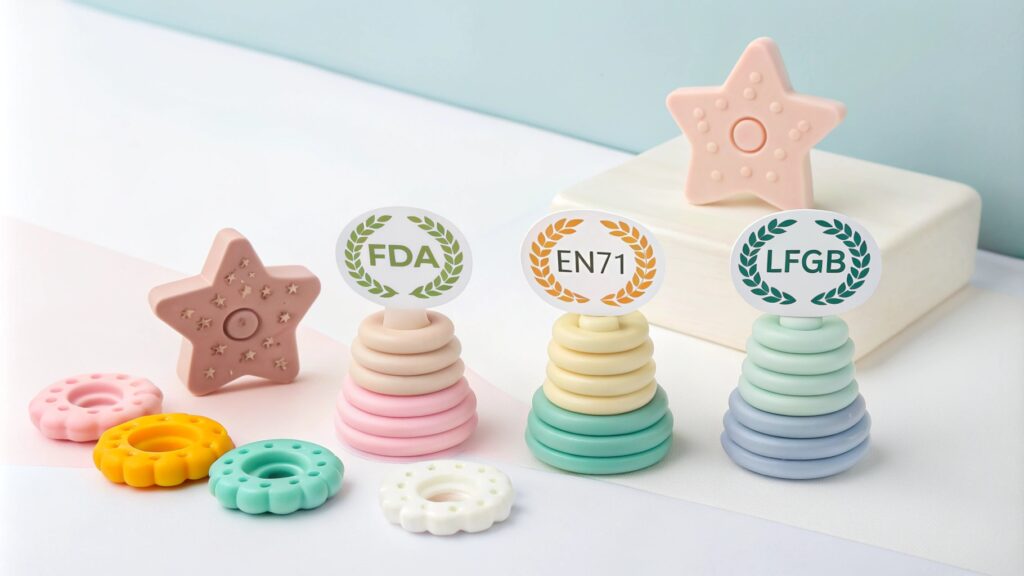
Silicone is inert, meaning it doesn’t react with saliva or food, and doesn’t break down into smaller pieces. Unlike some plastics, it doesn’t leach harmful chemicals. This makes silicone toys a safe choice for teething babies.
How to Choose Safe Silicone Toys
- Look for certifications like FDA, EN71, or LFGB.
- Avoid products with strong chemical smells.
- Choose toys labeled as BPA-free and phthalate-free.
I always recommend choosing trusted brands with a track record of safety.
What is the safest material for teethers?
With so many options—silicone, wood, and rubber—how do you pick the best one?
Silicone is often the safest material due to its durability, non-toxicity, and easy cleaning.
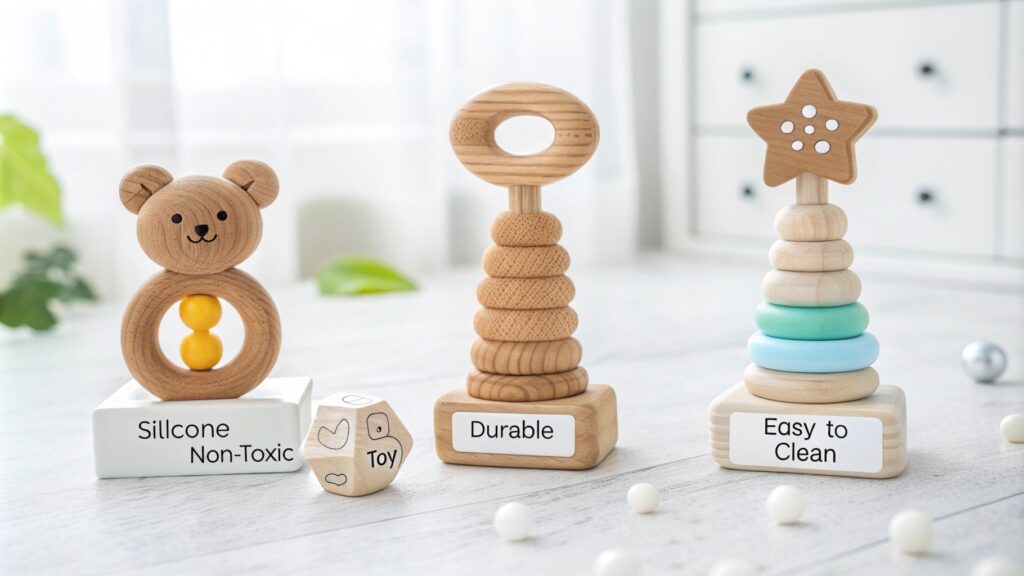
Dive Deeper into Material Choices
Comparison Table of Teether Materials
| Material | Pros | Cons |
|---|---|---|
| Silicone | Non-toxic, easy to clean, soft | Not biodegradable |
| Wood | Natural, eco-friendly | Requires more maintenance |
| Rubber | Soft, natural | Can develop odors |
| Plastic | Lightweight, inexpensive | Potentially toxic |
While wood and rubber are natural options, they can be harder to clean and maintain. Silicone strikes a balance between safety and convenience.
What are the disadvantages of teethers?
Despite their benefits, teethers are not without drawbacks.
The main disadvantages include the need for frequent cleaning and the risk of choosing low-quality products.
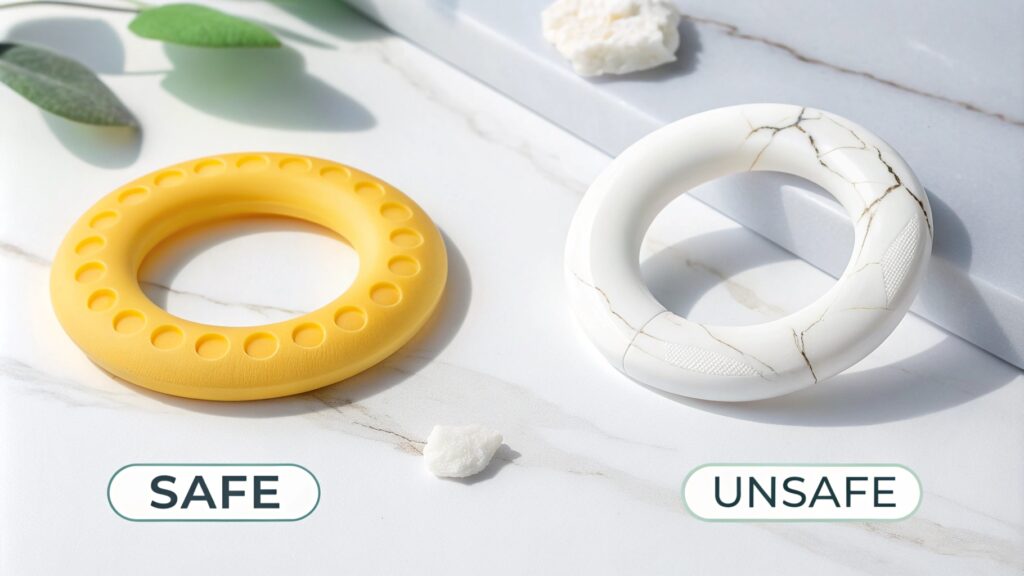
Common Concerns
- Hygiene: Teethers need regular cleaning to avoid bacterial buildup. Silicone teethers, however, are dishwasher-safe, making maintenance easier.
- Durability: Poor-quality teethers can break down or become damaged, posing a choking hazard.
- Overuse: Some babies may become overly dependent on teethers, potentially delaying other soothing techniques.
To mitigate these issues, I always recommend choosing high-quality silicone teethers and inspecting them regularly.
What are the side effects of silicon teethers?
Parents often worry about potential side effects of silicone teethers.
When made from food-grade silicone, side effects are rare and typically limited to allergic reactions, which are uncommon.
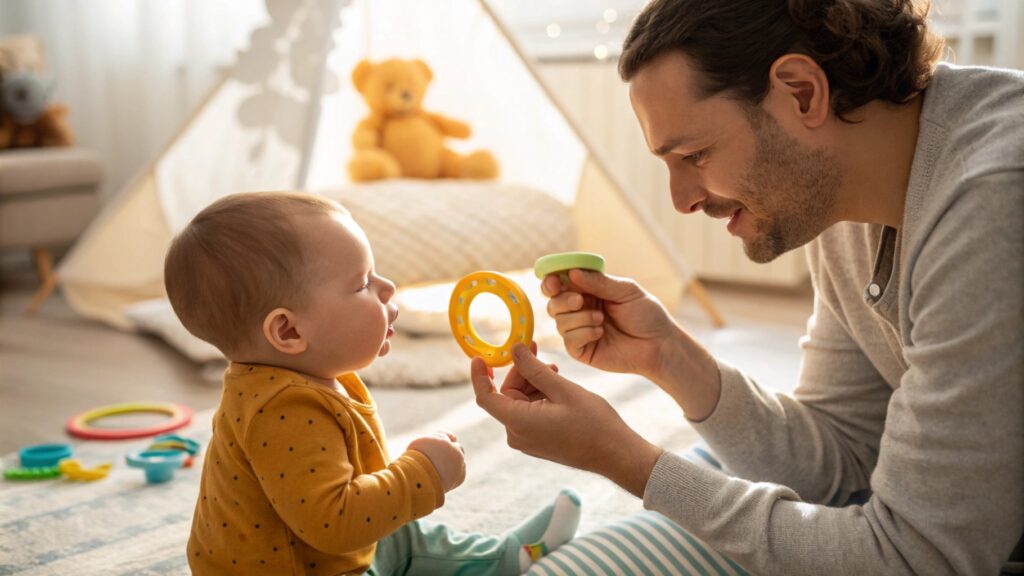
Side effects can arise if the silicone is not food-grade or if it contains harmful additives. Choosing certified products ensures your baby is not exposed to these risks.
My Advice
- Always inspect teethers for wear and tear.
- Avoid brightly colored products unless they are labeled as non-toxic.
- Wash teethers before and after each use to maintain hygiene.
Do apples help with teething?
Many parents use natural remedies like cold apple slices for teething relief. But is this safe?
Yes, cold apple slices can soothe gums, but supervision is necessary to prevent choking.
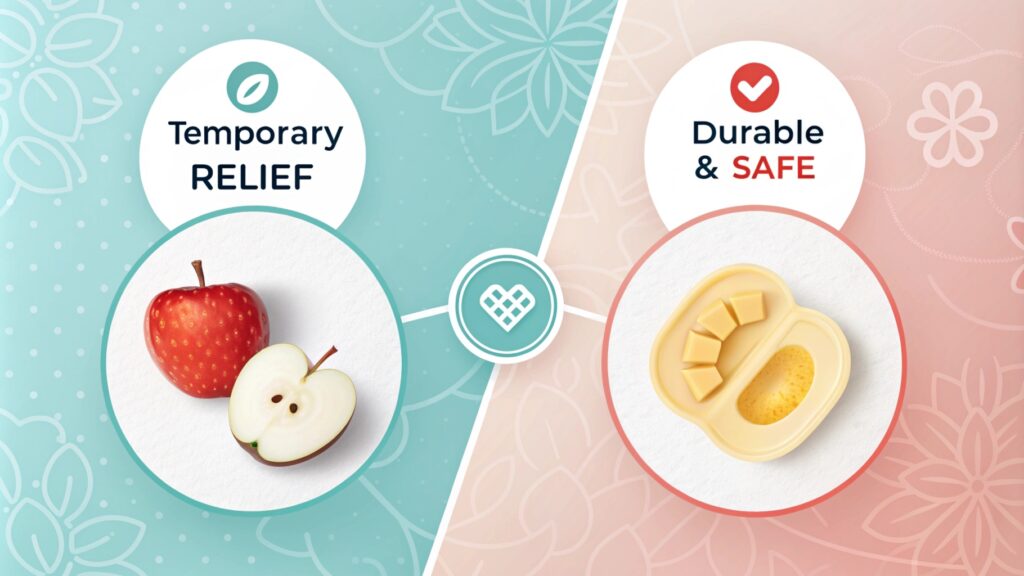
Apples are a natural and inexpensive teething aid. The coldness numbs the gums, providing temporary relief. However, they don’t replace the consistent safety and durability of silicone teethers.
My Experience
I sometimes used cold fruit for quick relief, but I found silicone teethers more reliable and easier to clean.
Which is better wooden or silicone teethers?
Wooden teethers are natural, while silicone ones are soft and durable. Which is better?
Silicone teethers are better for parents seeking easy cleaning, softness, and durability. Wooden teethers are more eco-friendly but require more maintenance.
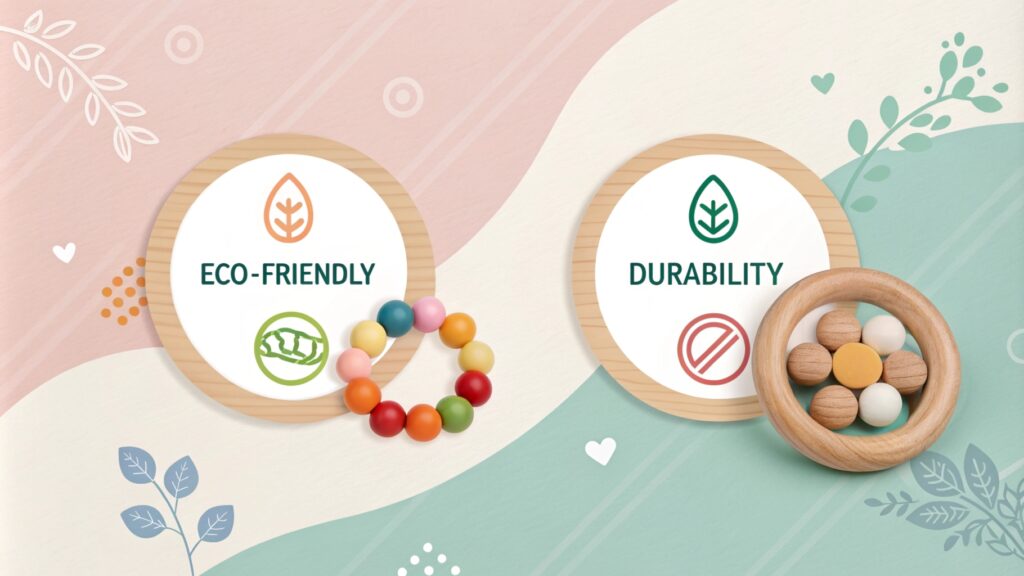
Comparison of Wooden and Silicone Teethers
| Feature | Silicone Teethers | Wooden Teethers |
|---|---|---|
| Cleaning | Easy (dishwasher-safe) | Requires more effort |
| Texture | Soft and flexible | Firm |
| Durability | Long-lasting | Can splinter over time |
| Eco-Friendliness | Less eco-friendly | More sustainable |
While both have their advantages, I prefer silicone for its consistent performance and ease of use.
Conclusion
Silicone teethers stand out as a safe, durable, and easy-to-clean solution for teething babies. By choosing certified food-grade silicone, you ensure your baby’s comfort and safety.
